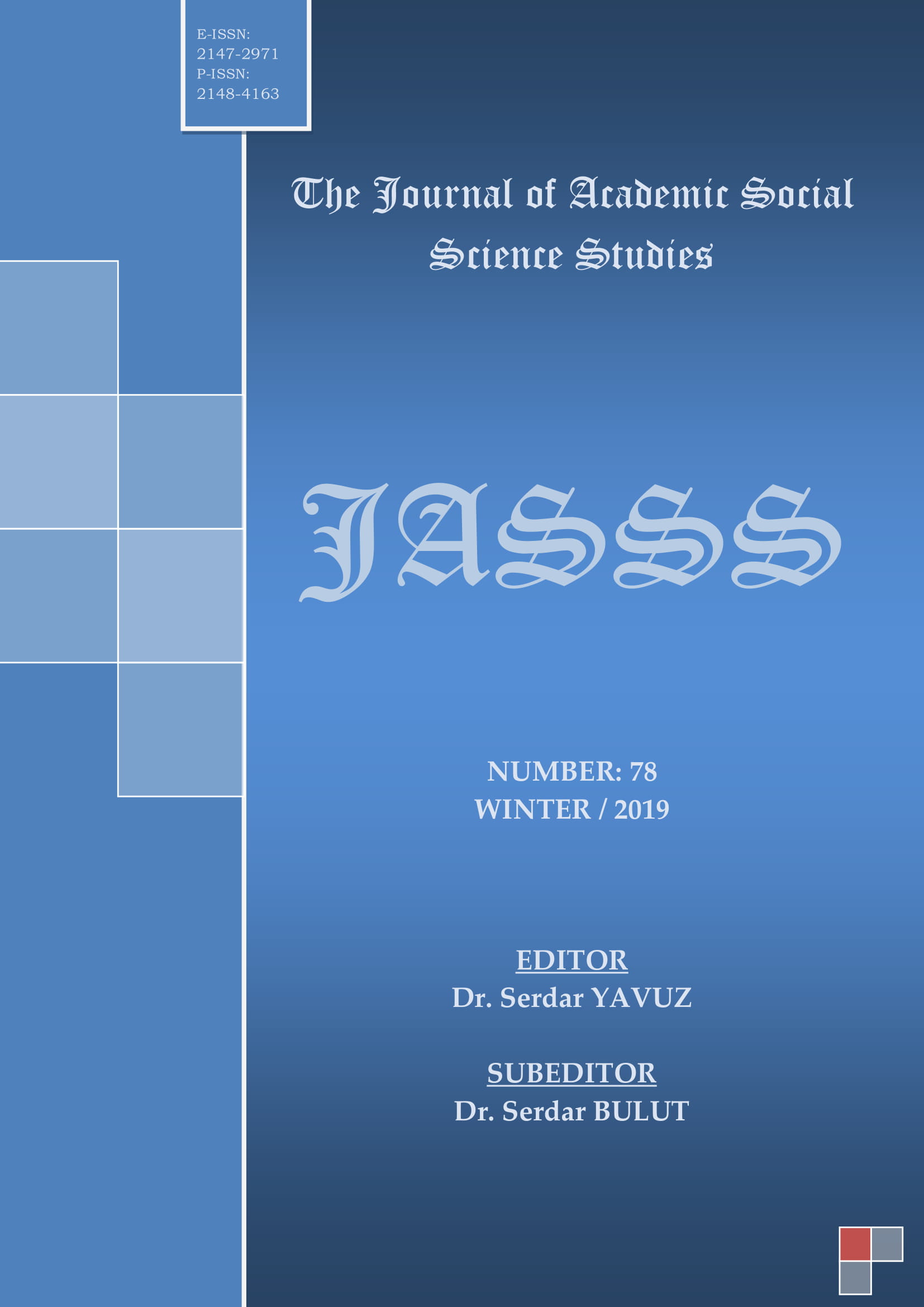Author :
Abstract
Halk edebiyatına ait unsurlar, ait oldukları milletlerin sosyal dokusunu, inançlarını, kültürünü yansıtan öğelerdir. Bir milletin birliğini, kimliğini, kısaca kültür adına bütün niteliklerini belirleyen halk edebiyatı motifleridir. Klasik edebiyat ise estetik gayeyi ön planda tutmakla birlikte altı asırlık geçmişi olan birçok kaynaktan beslenmiş ve aynı şekilde birçok alana kaynaklık etmiş köklü bir sahadır. Bu iki edebiyat alanı şekil ve içerik bakımından birbirinden ayrı düşse bile birbirini hem tematik yönden hem de biçim olarak zaman zaman etkilemiştir. Kimi şairler bir taraftan halk edebiyatı nazım biçimlerini kullanırken diğer taraftan divan şiiri geleneğini de sürdürmüştür. Konu olarak birçok ortak teması olan bu iki edebiyat üzerine bazı yazar ve şairler fikir üretmiştir. Bunlardan biri de Muhammed Rasim’dir. Müellifin Habname adlı eseri muhteva bakımından hem klasik hem de halk edebiyatını kapsar. Yazar, adı geçen eserde özellikle folklor unsurlarını ustalıkla kullanmış, zaman zaman edebî sanatlardan yararlanarak anlam kapalığına yol açan motifleri işlemiştir. Gazellerinde yerel unsurları sık sık kullanmasından dolayı günlük konuşma diline, atasözlerine deyimlere, yerel konulara, örf ve geleneklere yeterli derecede yer vermiştir. Tasavvufî terimleri açıklamada dil ve üslup ağır olsa bile onun şiirlerinde kullandığı dilin daha sade olduğu görülmüştür. Bu çalışmamızda Habname’de yer alan halk edebiyatı motif ve arkaik unsurlarına, atasözlerine, deyimlere, özdeyiş ve dualara yer verilmiştir.
Keywords
Abstract
The elements of folk literature are the elements that reflect the social texture, beliefs and culture of the nations to which they belong. They are the folk literature motifs that determine the unity of a nation, its identity and all its qualities in the name of culture. Classical literature, on the other hand, is a deep-rooted field that has been fed by many sources with six centuries of history and has also been the source of many fields. Even though these two fields of literature fall apart in terms of form and content, they have influenced each other both in terms of thematic and form. While some poets used the verse forms of folk literature on the one hand, they maintained the tradition of divan poetry on the other. Some writers and poets have produced ideas on these two literatures which have many common themes. One of them is Muhammed Rasim. The author's Habname includes both classical and folk literature in terms of content. The author has used folklore elements skillfully in the said work, and from time to time used the literary arts to create motifs that lead to a lack of meaning. Because of his frequent use of local elements in his ghazals, he has provided sufficient language, proverbs, idioms, local subjects, customs and traditions. Even though language and style are heavy in explaining Sufism terms, it is seen that the language used in his poems is more simple. In this study, folk literature motifs and archaic elements, proverbs, idioms, aphorisms and prayers in Habname are given.
Keywords
- Aksoy, Ö. A. (2010). Türkçe Tabirler Sözlüğü. Atasözleri ve Deyimler Sözlüğü, İstanbul: İnkılap Kitabevi.
- Aktan, M. F. (2019). Hoca-zâde Muhammed Râsim Hikmet'in Hâb-nâme'si (1b-168a) (İnceleme-Metin- Dizin Yayımlanmamış Doktora Tezi Dicle Üniversitesi Sosyal Bilimler Enstitüsü, Diyarbakır.
- Albayrak, N. (2004). Ansiklopedik Halk Edebiyatı Terimleri Sözlüğü, İstanbul: L&M Yayınları.
- Batislam, D. (1999, Kasım). Osmanlı Dünyasında Şiir Uluslararası Sempozyumu: 15. Yüzyıl Dîvân şairlerinin şiirlerindeki Halk Kültürü Öğeleri, İstanbul : Yapı Kredi Kültür Sanat Yayıncılık.
- Bulut, S. (2012). Anadolu Ağızlarında Kullanılan Kalıp Sözler ve Bu Kalıp Sözleirn Kullanım Özellikleri, Turkish Studies, Volume 7/4, Fall, p.1117-1155.
- Demir, E. (2013). Atabetü’l-Hakâyık’ta Geçen Deyimler, Atasözleri ve Özdeyişler. Türkiyat Mecmuası: S.23: 38-52 .
- Elçin, Ş. (2004). Halk Edebiyatına Giriş. Ankara: Akçağ Yayınları.
- Gölpınarlı, A. (2004). Tasavvuftan Dilimize Geçen Deyimler ve Atasözleri. İstanbul: İnkılâp Yayınları.
- Gündüz, E. ( 2009). Divan ve Halk Edebiyatı Sanatçılarına İlham Kaynağı Olan Rüya. Selçuk Üniversitesi Sosyal Bilimler Enstitüsü Dergisi: S. 22 : 188-202.
- Karakaş, A. (2014). Divan ve Aşık Edebiyatında Rüya. Fraktal : S.3 : 19-27.
- Korkmaz, E. (1994). Ansiklopedik Alevilik Bektaşilik Terimleri Sözlüğü. İstanbul : Ant Yayınları
- Ögel, B. (2001). Dünden Bugüne Türk Kültürünün Gelişme Çağları, İstanbul: Türk Dünyası Aratırmaları Vakfı Yayınları.
- Şahin, E. (2012). Kargışlar İçinde Eski Sevgili. Prof. Dr. Mine Mengi Adına Türkoloji Sempozyumu (20- 22 Ekim 2011) Bildirileri. Çukurova Üniversitesi Sosyal Bilimler Enstitüsü, Adana





